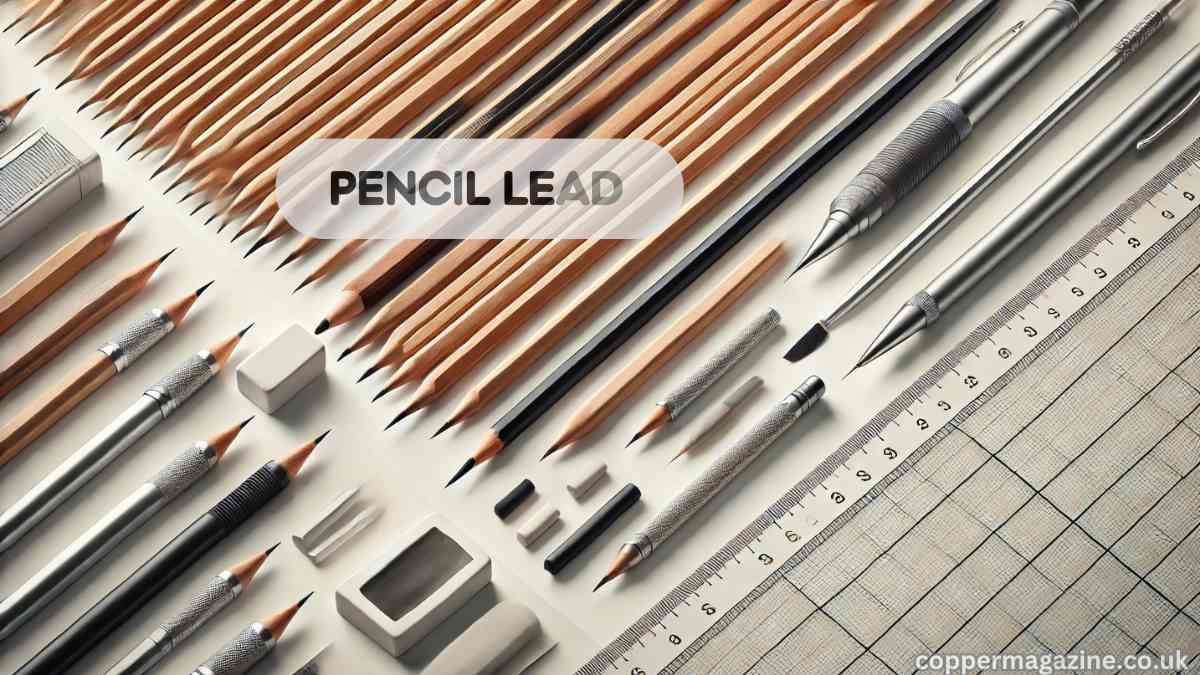Pencil Lead: Understanding Its Composition, Uses, and Importance
Unlocking the Mystery of Pencil Lead and Its Many Applications

Pencil lead is a crucial component of a tool we use daily—the pencil. Despite its name, pencil lead contains no lead metal, a common misconception that has persisted for centuries. This article will dive into what pencil lead is, how it is made, and its various types, as well as address frequently asked questions about its toxicity, hardness scale, and the specifics of mechanical pencil lead sizes.
What Is Pencil Lead Made Of?
The term “pencil lead” is a misnomer dating back to the discovery of graphite. Originally mistaken for lead, graphite is a form of carbon, combined with clay to form the core of modern pencils. This mixture is heated at high temperatures to create a durable and efficient writing material. The ratio of graphite to clay determines the pencil’s hardness and darkness.
The softer and darker the pencil, the higher the graphite content. Conversely, a higher clay content results in a harder and lighter pencil core. This composition not only allows for smooth writing but also ensures longevity and versatility for artistic and technical applications.
The Pencil Lead Hardness Scale
To classify pencil cores, the pencil lead hardness scale is used. This scale ranges from hard (H) to black (B), with HB at the midpoint. Numbers further refine this scale, indicating the degree of hardness or softness. For example:
- 9H: Extremely hard and light.
- HB: A balanced option for writing and drawing.
- 9B: Extremely soft and dark.
Understanding this scale is essential for selecting the right pencil for tasks ranging from technical drawings to expressive artwork.
Is Pencil Lead Toxic?
A common concern is whether pencil lead is toxic. The good news is that pencil lead is entirely safe. Since it is composed of graphite and clay, there is no lead metal involved. Accidental ingestion or contact with pencil lead poses no significant health risks. This safety makes pencils a trusted tool for all ages.
Mechanical Pencil Lead: A Modern Evolution
Mechanical pencils offer a sleek, reusable alternative to traditional wooden pencils. Their core—known as mechanical pencil lead—is made from the same graphite-clay mixture but tailored for specific needs.
Advantages of Mechanical Pencil Lead:
- Precision: Thin leads provide clean, precise lines.
- Convenience: Replaceable leads eliminate the need for sharpening.
- Variety: Available in multiple sizes and hardness levels.
Mechanical Pencil Lead Sizes
Mechanical pencil lead sizes vary to accommodate different writing and artistic styles. Common sizes include:
- 0.2 mm to 0.5 mm: Ideal for technical drawings and fine details.
- 0.7 mm: Suitable for general writing.
- 1.0 mm and above: Best for bold marks and shading.
Each size caters to specific needs, ensuring versatility for users ranging from students to professionals.
How Pencil Lead Supports Creativity and Precision
Pencil lead, whether in wooden or mechanical pencils, plays a vital role in creativity and productivity. Artists value its gradations for sketching and shading, while engineers rely on its precision for detailed blueprints. Writers appreciate its reliability for jotting down thoughts and creating drafts.
Key Applications:
- Art: Graphite’s smooth texture makes it perfect for detailed drawings and bold sketches.
- Education: Pencils remain a staple in classrooms for their ease of use and erasability.
- Engineering: Harder grades provide fine lines for technical schematics.
Innovations in Pencil Lead
The evolution of pencil lead continues with advances in material science. Manufacturers are now producing eco-friendly leads and exploring new compositions to improve durability and performance. These innovations ensure that pencils remain relevant in an increasingly digital world.
Conclusion
Pencil lead, whether in a traditional or mechanical pencil, remains an indispensable tool in education, art, and industry. Understanding its composition, grading, and applications can help users make informed choices for their creative and practical needs. By debunking myths and exploring its versatility, we see that pencil lead is more than just a writing medium; it’s a cornerstone of expression and precision.
FAQs About Pencil Lead
What Is Pencil Lead Made Of?
Pencil lead is made of a graphite and clay mixture. This combination ensures durability, smooth writing, and a range of hardness levels.
Is Pencil Lead Toxic?
No, pencil lead is not toxic. It is safe to use, even for children, as it contains no lead metal.
What Is the Pencil Lead Hardness Scale?
This scale ranges from hard (H) to soft (B), with HB representing a balanced core. It helps users choose the right pencil for their needs.
What Are Common Mechanical Pencil Lead Sizes?
Mechanical pencil lead sizes include 0.2 mm, 0.5 mm, 0.7 mm, and 1.0 mm or larger. Each size serves different writing and drawing purposes.
How Does Mechanical Pencil Lead Differ?
Mechanical pencil lead is more uniform and replaceable, providing consistent quality and eliminating the need for sharpening.



